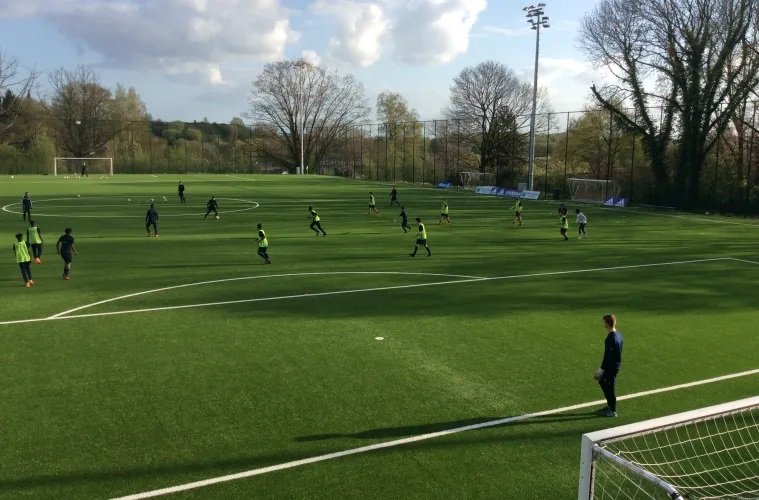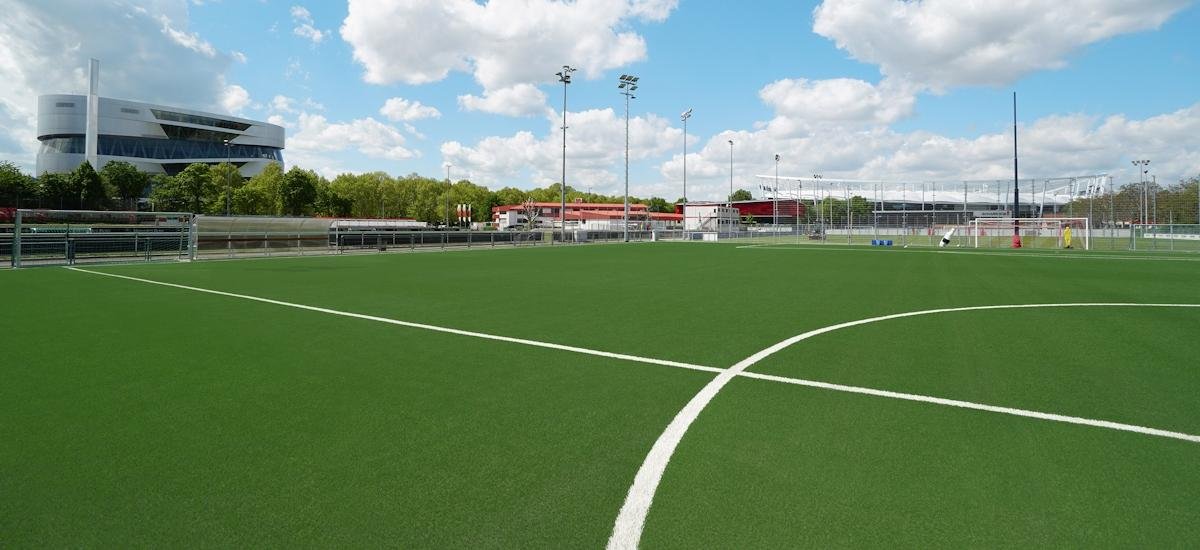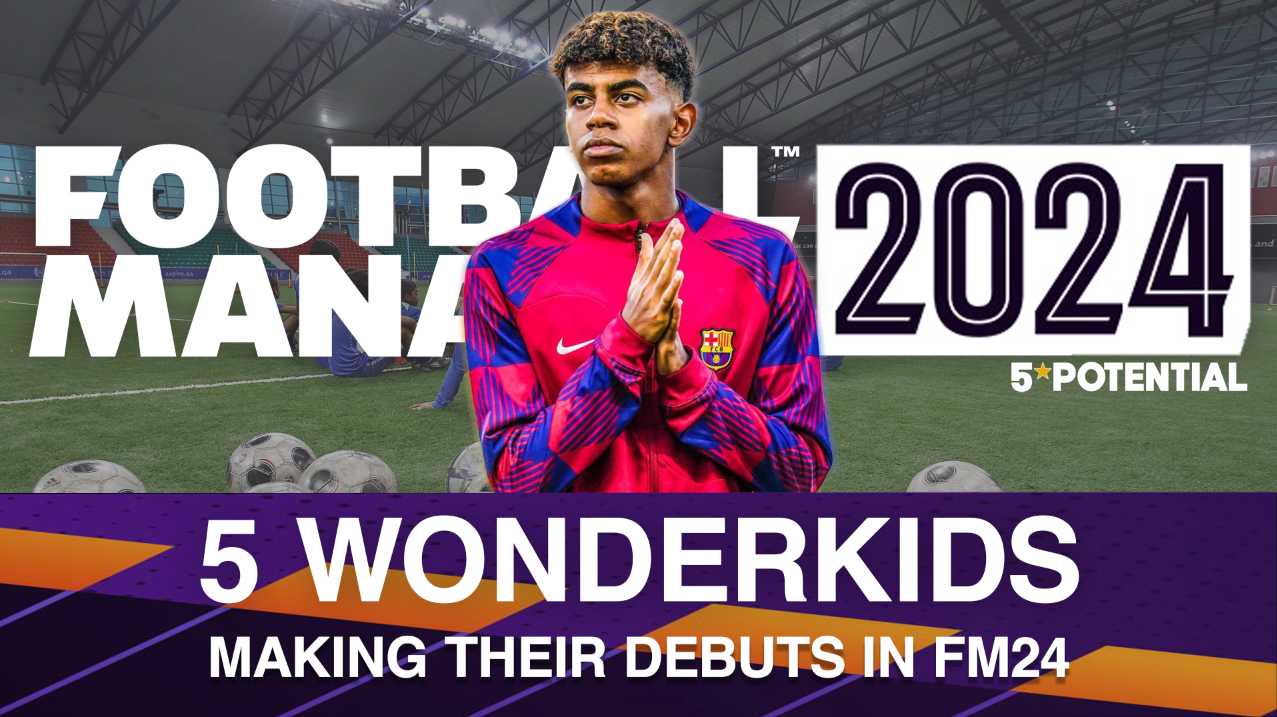by MaddFM.
Retraining players to a new position is one of the most enjoyable things to do in Football Manager - so much so that one of my favourite pieces I’ve ever written was about Retraining Players for Success in FM which I penned for The Byline, Sports Interactive’s official Football Manager blog. There is nothing better than that feeling where you have spotted something no-one else has, identifying something in a player that none of their previous managers have been shrewd enough to visualise, and ultimately that feeling of redemption and triumph once that player takes like a duck to water in their new role and ends up a clear illustration of why you are the greatest and most shrewd master tactician within your FM save universe.
Of course it’s not just in Football Manager that we see players finding and excelling in a new position, whereby even recently we seen players such as Chiedozie Ogbene (AMR to RWB), Trent Alexander-Arnold (RB to CM) and Kai Havertz (STC to CM) all thriving in a new role which has largely been masterminded by their management team and coaching staff accordingly, and of course we have seen even more notable cases down through the years with the likes of Gareth Bale (LB to AML), Michail Antonio (RB to STC) and Joelinton (STC to BBM) all successully advancing in their careers after a significant role change.
Based on this and to inspire you to think more about retraining players in Football Manager, here is a list of 10 suitable players that could somewhat easily and feasibly be retrained to a new role based on their in-game profile and attributes (you can also find the FM23 list here) - players who logically are set to a specific position in-game, but are entirely well suited to a completely different role based on some specific attributes which make them uniquely adaptable in FM24.
1. Sergej Milinković-Savić (CM → TF)
Yes I am casually suggesting converting one of the best creative midfielders in FM history to the traditionally less attractive Target Forward position, but hear me out; Sergej Milinković-Savić is 6’3” in height (192cm) and not only is physically dominant with 18 Strength, 17 Balance, 17 Heading and 16 Jumping Reach - he is also technically ideal for the role with 15 Technique and First Touch, not to mention possessing 15 Finishing and 17 Off the Ball which would make him a mean striker who can receive the ball either at height or to feet, hold up play, bring others into the game and ultimately cause havoc for opposition defenders. Throw in his high Bravery, Work Rate and Determination and you might just have a rare gem on your hands who can offer much more than just creativity and flair in your midfield. BEAST.
2. John McGinn (CM → LB)
At 28 there is a point whereby John McGinn’s relentless energy and aggression will eventually start to wane in the heart of Aston Villa’s midfield, and as they progress in terms of league position and European adventures, they may look to upgrade in this position as their ability to attract bigger names increases under Unai Emery. Fear not - McGinn can still play an important role for Villa and could easily be retrained either as a Full-Back or Wing-Back on that left-hand side; not only is he left-footed, he has the physical and mental attributes needed for a great wing-back (Stamina, Work Rate, Natural Fitness, Anticipation, Teamwork), has great Passing, Crossing and Dribbling ability while also being solid defensively in terms of Tackling and Positioning; while the likes of Alex Moreno and Lucas Digne have been found to have some weaknesses in terms of defensive attributes, one would not expect the same from John McGinn if retrained accordingly.
3. Alessandro Bastoni (CB → DLP)
Here we go again - taking one of the best Centre-Halves in recent FM history and converting them to a midfielder? Why not - Alessandro Bastoni is of course solid as a rock defensively, but if you peel back a few layers you will also notice that he has 15 Passing, 15 Vision, 17 Teamwork and 15 Pace not to mention having 14 First Touch and Technique making him highly suitable to operate as a playmaker either in the DM or MC strata. In a world where Italy are relatively blessed in the Centre-Back department (Scalvini, Gatti, Acerbi etc) but still appear quite heavily reliant on an aging Jorginho in the middle of the park, Bastoni could be just what the doctor ordered to help reignite the Azzuri midfield and restore the Italians to national team glory.
4. Alex Grimaldo (LWB → AMC)
Is it just me or do we not see enough left-footed #10’s these days? Of course the likes of Messi, David Silva, Martin Ødegaard and Bernardo Silva come to mind, but in general a lot of the best #10s tend to be right-footed and there is perhaps a gap in the market for a quality left-footed AMC. Enter Alex Grimaldo, Leverkusen’s high-flying left wing-back who has been a pivotal part of their title challenge this season. Since picking him up on a free transfer, Grimaldo looks to be one of the signings of the season however looking at his FM profile, he very much has the quality and attibutes to perform as a #10 if we look at his First Touch (16), Technique (16), Passing (16), Vision (16), Long Shots (16), Off the Ball (15) and Composure (16) - all attributes which make for a very effective AMC who can get on the ball, dictate play and ultimately be the lynchpin around which attacking play can be built; similar to Bastoni above, Spain are blessed with left-backs but could perhaps do with some additional quality in the #10 role - Grimaldo may just be the guy.
5. Bryan Cristante (DM → DLF)
An absolute pillar of a midfield general, Bryan Cristante has never really been one to steal the headlines and is almost an unappreciated midfielder of his time considering he has played over 30 games in almost every season since breaking into the Atalanta first team before moving to Roma in 2018. In FM he rarely tops the creative or goalscoring charts, however if we run the rule over his attributes we find a midfielder with 16 Off the Ball, 16 Composure, 14 First Touch & Technique along with 13 Finishing which is by no means bad especially when you add in that he has 16 Jumping Reach and 17 Heading for a 6’2” midfielder. Stuck for a forward to pair with a more rapid or mobile striker in a 4-4-2? Cristante could be your answer 👌.
6. Sacha Boey (RB → DMC)
Bayern’s new signing is of course a right-back by trade, but their recent dip in form has largely been attributed to issues in midfield and the lack of a proper #6 to keep things together in the middle of the park. Step forward Sacha Boey, who incidentally has all the attributes needed to operate as a DM or Anchor in FM24 - 16 Tackling, 14 Positioning, 16 Work Rate, 17 Stamina, 15 Strength and most interestingly 17 Aggression which as we all know is a key ingredient to a successful defensive midfielder. While he may be slightly more limited in terms of passing and ball control, at 22 he has plenty of time to develop and improve under your tutelage in-game.
7. Scott McTominay (CM → PF)
While Scott McTominay has clearly demonstrated his eye for goal for both club and country in recent times, the idea of him being an actual striker hasn’t really been taken seriously at many levels but in FM24, there is a serious case to be made here; 14 Pace, 14 Finishing and 14 Off the Ball are a great recipe for goals, and when you add in his height, strength, aerial ability and a mix of 19 Stamina and 17 Natural Fitness, there is the makings of a great Pressing Forward here who will run all day while also knowing where the goal is. Scott McTominay as a #9 - get it done.
8. Lucas Torreira (DMC → RB)
While we have seen quite a few full-backs stepping up into midfield of late (largely driven by the likes of Joao Cancelo, Oleksandr Zinchenko, Reece James, TAA and even Kieran Trippier of late) - it’s not as often that we see a player moving in the other direction, however it can be highly beneficial having a player who can cover multiple positions in particular full-back and midfield roles therefore maximising their place in your matchday squad. Former Arsenal man and current Galatasaray enforcer Lucas Torreira is a great example of a player whose skills and ability can be expanded to cover multiple roles in-game, starting by retraining him as a right-back wherein he already has 15 Tackling, 16 Marking, 15 Positioning and 18 Anticipation in addition to key attributes such as 17 Work Rate, 17 Acceleration and 16 Determination, all of which should see him transition quite quickly into the role as needed; though not very tall, he is also worth considering for the new Inverted Full-Back role which has been an excellent addition to FM24 this year.
9. Douglas Luiz (DMC → IF)
A glorious all round player who loves taking a corner. Douglas Luiz is an excellent and highly versatile midfielder in FM24 who can occupy almost any central midfield role as needed, however it doesn’t have to stop there; with great all round Technique, First Touch, Passing, Off The Ball, Flair and Shooting/Finishing ability, Luiz could easily be deployed in a more advanced role and with a 14 attribute for both Pace and Acceleration, he is quick enough to offer an attacking threat especially if we think of him cutting in from the left hand side and fashioning goalscoring opportunities on his favoured right foot. This combined with 15 Composure and a player trait of Shoots from Distance open up a tasty can of worms as we think about Luiz operating as a forward player, be it for Villa or any top level European club with those attributes 🔥.
10. Joelinton (CM → DC)
A player who completely personifies the benefits of retraining in a new position - Joelinton has been a revelation since transitioning from a failed goal-less striker into one of the most feared and effective box-to-box midfielders in the Premier League, earning him multiple call-ups to the Brazil squad and almost guaranteeing himself to be the first name on Eddie Howe’s teamsheet each week such is his impact and influence on Newcastle’s midfield. That said, in FM24 Joelinton could very much be retrained to play at Centre Back if desired; not only is he strong as an ox and great in the air, his Tackling (15), Positioning (14), Bravery (20) and Aggression (17) make him highly retrainable in this position not to mention his high Determination and Decision Making. With 16 Dribbling, 15 First Touch and 14 Technique you potentially have a top class Ball Playing Defender on your hands - what’s not to like?
There we have it - 10 players that could be retrained to completely new roles in FM24. By now you can see the point here; the preset in-game positions aren’t everything, and if a player has a mix of the right attributes for a role then it can be highly beneficial to retrain them accordingly, you might just save yourself a small fortune in the transfer market by turning an average player in one role into an absolute gem in another. As we learned in my Byline piece about retraining, it takes approximately six to nine months to retrain a player in a brand new position in which they had no position/role familiarity previously, and about 12 months overall before they can be said to have acquired a ‘Natural’ familiarity in the role. What are you waiting for? GET ON.
Thanks for reading.
Interested in being a guest writer for 5 Star Potential? Drop us a message on Twitter or reach out to MaddFM directly.




























